

PARIFEX is proud to have been awarded its very first EcoVadis medal, in recognition of the company’s many initiatives in the field of Corporate Social Responsibility (CSR). The first in a long series of EcoVadis awards, the French manufacturer of multifunction radars has been awarded the silver medal. This places PARIFEX in the top 15% of companies evaluated in the EcoVadis database over the last twelve months.
The Ecovadis assessment focuses on four main themes:
- Environment
- Labor
- Human rights
- Ethics and sustainable procurement
The EcoVadis medal attests to the positive approach adopted by the companies assessed as they work to improve their CSR management performance and generate a positive impact.
Every year, PARIFEX reinforces its commitment to Corporate Social Responsibility through numerous initiatives focused on the well-being of its employees, such as training in first aid, psychosocial risks and harassment, and the organization of events such as Quality of Life at Work Week and sports challenges.
The company is also committed to integrating a responsible approach into every stage of its projects, in order to limit their environmental impact. This includes optimizing freight flows, recycling packaging and reducing the power consumption of radars, projects and offices.
Finally, the development of an inclusive and ethical corporate culture is based on diversity and tolerance, strong values for the French entrepreneur.
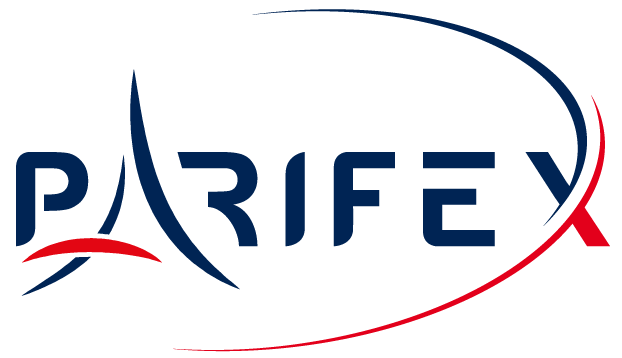



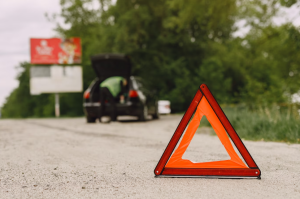 What if the roles were reversed and drivers looked out for their safety? It starts with respecting the emergency lane. On the motorway, it is essential never to encroach on the emergency lane, as this lane is reserved for vehicles in emergency situations. Encroaching on it exposes users to increased risk of accidents, as these areas are often close to vehicles in distress or road works.
What if the roles were reversed and drivers looked out for their safety? It starts with respecting the emergency lane. On the motorway, it is essential never to encroach on the emergency lane, as this lane is reserved for vehicles in emergency situations. Encroaching on it exposes users to increased risk of accidents, as these areas are often close to vehicles in distress or road works.![[INFOGRAPHIC] Pedestrian and Cyclist Safety in 2024](https://www.parifex.com/wp-content/uploads/2025/03/Velo_pieton_bus_ville_BD.jpg)
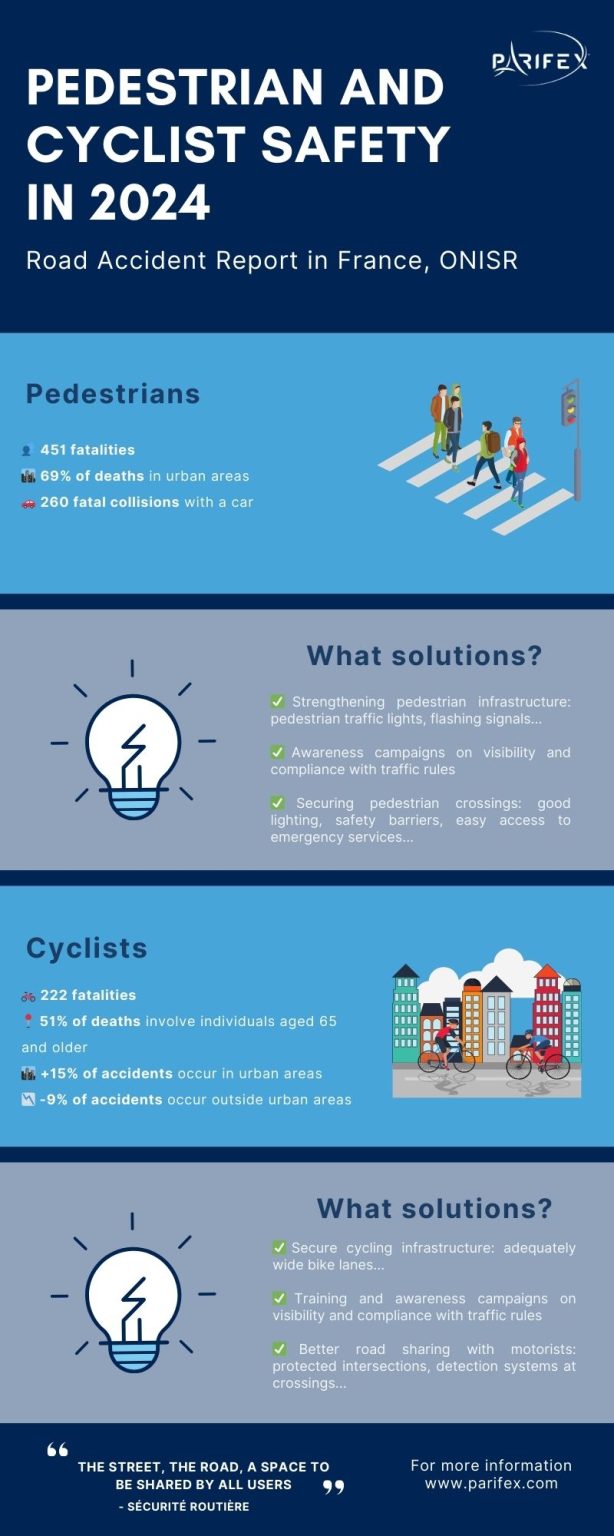



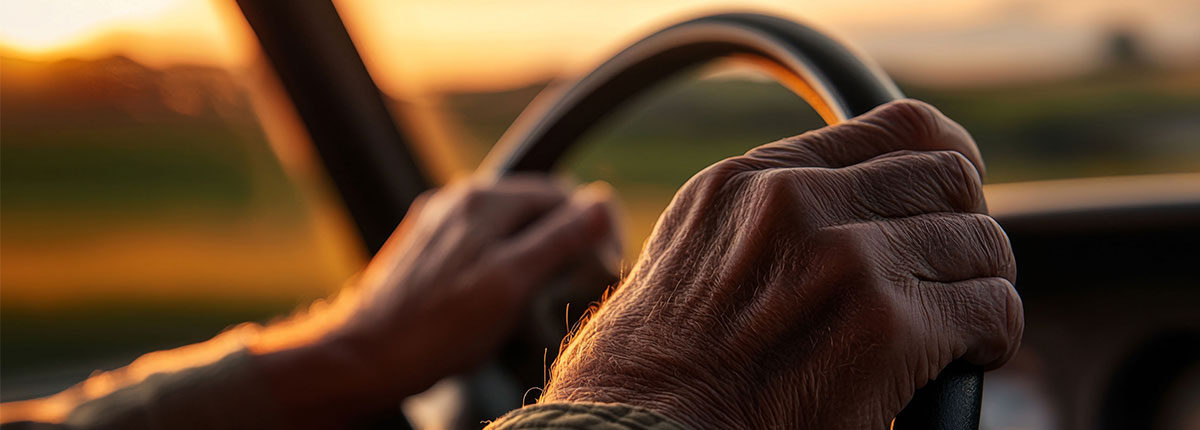
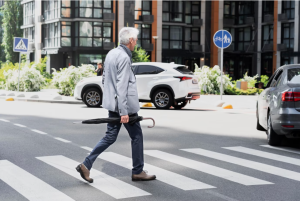 Contrary to what one might think, seniors are just as at risk in urban areas as on roads outside urban areas, where speeds are higher and the margin for error is smaller. 50% of pedestrian fatalities and 51% of cyclist fatalities on secondary roads are aged 65 or older, according to ONISR. Although mortality on these roads decreased between 2023 and 2024, the rate remains high.
Contrary to what one might think, seniors are just as at risk in urban areas as on roads outside urban areas, where speeds are higher and the margin for error is smaller. 50% of pedestrian fatalities and 51% of cyclist fatalities on secondary roads are aged 65 or older, according to ONISR. Although mortality on these roads decreased between 2023 and 2024, the rate remains high.![[INFOGRAPHIC] French road accident report in 2024](https://www.parifex.com/wp-content/uploads/2025/02/Infographic_accident_report-1.jpg)



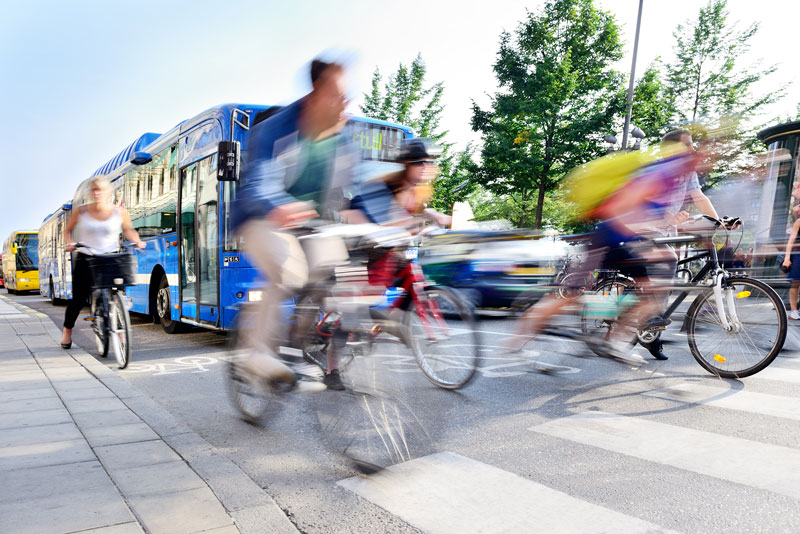



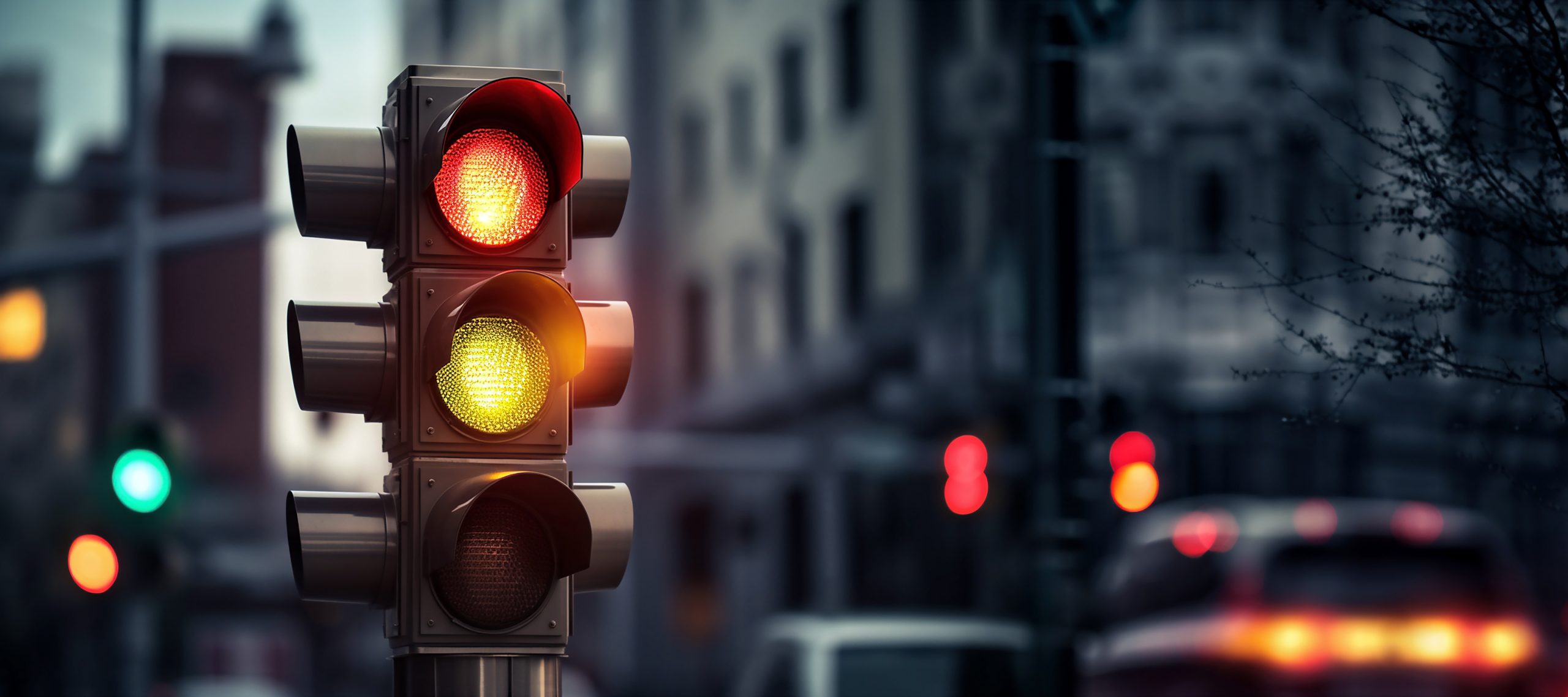


 Drunk driving has similar consequences to those caused by various distractions at the wheel, such as the telephone, music… In fact, just as the driver’s eyes are drawn away from the road by visual distractions such as a billboard, an eye-catching external situation, etc., the alcoholic driver finds it extremely difficult to focus on the road. Driving under the influence of alcohol is just as dangerous as losing your train of thought.
Drunk driving has similar consequences to those caused by various distractions at the wheel, such as the telephone, music… In fact, just as the driver’s eyes are drawn away from the road by visual distractions such as a billboard, an eye-catching external situation, etc., the alcoholic driver finds it extremely difficult to focus on the road. Driving under the influence of alcohol is just as dangerous as losing your train of thought.

